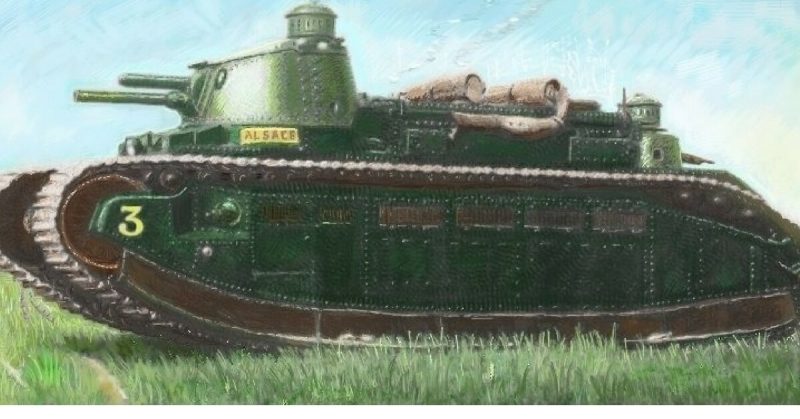In a time when bigger was considered better, an unofficial term was coined to describe a category beyond the heavy tank.
The super heavy tanks of Germany, Britain, France, and Russia were developed in secrecy during WWI, but none of them entered active service before the war ended.
Only the French Char 2C became part of its Armed Forces. The German option never left prototype level. British and Russian super heavy tanks remained the fantasy of their developers; never leaving the designing phase.
These would-be super heavy tanks were all abandoned as concepts. Their impressive size lost its value in an era that was developing bombers and high-calibre anti-tank weapons.
Nevertheless, these Goliaths on tracks remain as a peculiar piece of military history.
1. K-Wagen, Germany
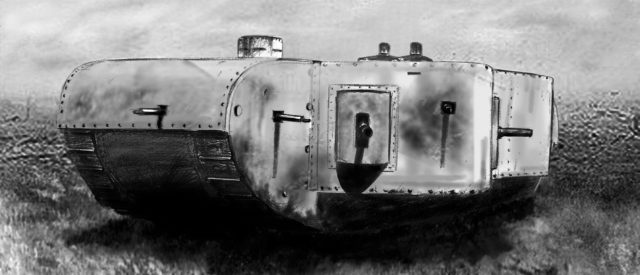
In 1917 the Imperial German Army began producing the A7V; the first tank in German history. The A7V had its flaws, but the potential was evident. The Germans continued pursuing improved tank designs hoping to turn the tide of the war.
Around the same time, the K-Wagen was given the green light for production. The pioneer of German tank design, Joseph Vollmer, was instructed to produce a tank intended to be used in break-through situations.
Only one out of two prototypes of the K-Wagen was completed, shortly after the war ended. However, it was destroyed following the Versaille Treaty, which forbade the German army to produce and possess tanks in its military arsenal.
The tank was a true monster of its time; it was armed with four 77 mm guns together with seven machine guns. It contained a crew of 27 people and weighed 120 tons. Despite its heavy armament, the armor was only 30 mm thick. Compared to WWII tanks, this armor would put the K-Wagen into light tank category.
2. Mendeleev Rybinsk Tank, Russian Empire
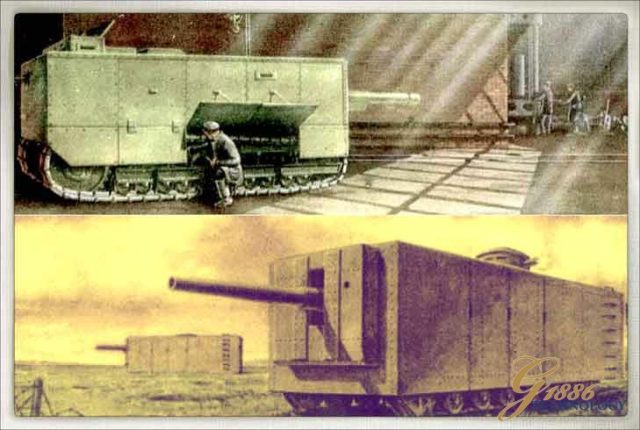
The Mendeleev Rybinsk tank was named after its designer, Vasily Mendeleev, and after the town in which the first drawings of the vehicle were introduced to the Russian Imperial Army officials.
As mentioned the tank never left the drawing table. It was intended as a game changer on the Eastern front of WWI. It’s 127 mm gun, fitted inside a train-like hull that weighed 173 tons and was to be operated by an eight-man crew. Much better armored than its German counterpart it used steel plates for protection. It was designed with a revolutionary gas suspension system and a high-powered petrol engine, but as the tank was never constructed, these concepts were abandoned.
A unique device was invented to enable the tank to move independently on railway tracks. The project received little support and Mendeleev tried to construct the tank singlehandedly. The lack of interest by the government prevented him from doing so, and the tank remained nothing more than a series of drawings and plans.
3. The Flying Elephant, Great Britain
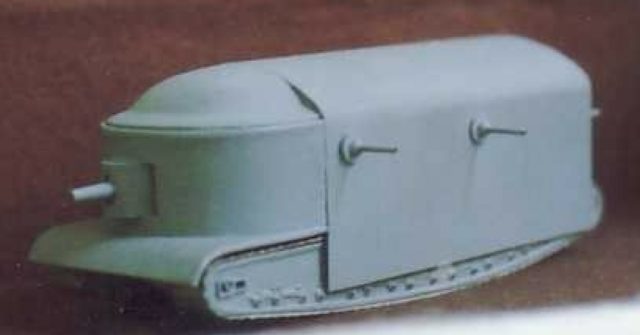
William Tritton, an agricultural expert turned pioneer tank designer, noticed the flaws of the Mark I tank soon after it was put into service.
The first and primary AFV of the British Army during the Great War was, in fact, extremely vulnerable to artillery fire. As WWI was primarily fought with extensive use of heavy artillery guns, this was indeed something that required attention.
Tritton embarked on a quest to produce a heavy armored tank capable of withstanding artillery shell hits. In 1916 his designs were approved. It weighed 100 tons. The tank’s extremely thick armor was 3″ at the front, 2″ on the sides. It was designed to bear a standard 57-millimetre 6-pounder gun, but some sources claim its main armament was to be a 75-millimetre or 13-pounder gun.
In 1916 the tank entered prototype phase, but it was never finished. The concept was abandoned as the military deemed the tank’s lack of mobility and speed was a massive setback.
4. Char 2C, France
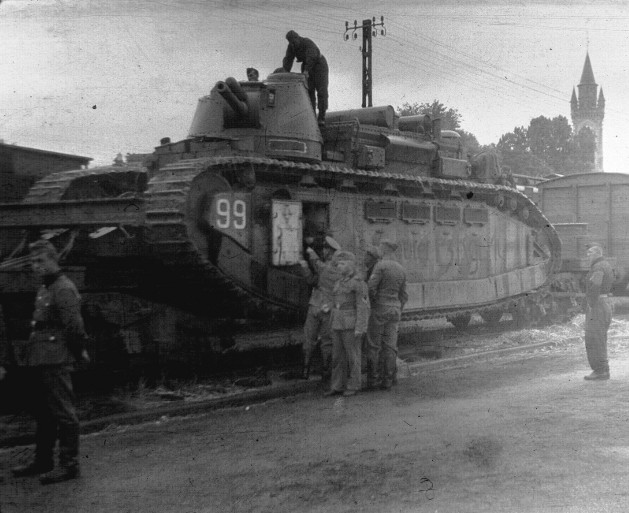
The only operational tank on this list was the Char 2C. In physical dimensions, this was the biggest tank in history that made it into service. Its development began in 1916, shortly after the introduction of the famous British model Mark I, and the initial designs were ready the following year.
The French were keen on developing a tank that would overshadow the British. The war had ended before the first prototypes were finished, but the French continued work on them, producing 10 units in 1921.
The Char 2C was 10.27 m long and weighed about 69 tons. This land battleship was armed with a 75 mm gun, model Canon de 75 modèle 1897. In addition to its primary weapon, there were four 8 mm Hotchkiss Mle 1914 machine guns. Three were placed in gimbal mounts at the front and sides and one in a rear turret.
After WWI these tanks slowly lost their value, as new smaller, more capable models arrived. By the 1930s, Char 2C was nothing more than a paper tiger. Considered obsolete, their low speed and high profile made the Char 2C sitting ducks for fighter-bombers and anti-tank guns.
At the beginning of WWII the tanks were kept in the rear, where they were used for propaganda films ordered by the French government. The public thought the tanks were invincible, and that undeserved image contributed to the rapid defeat of France in 1940.
